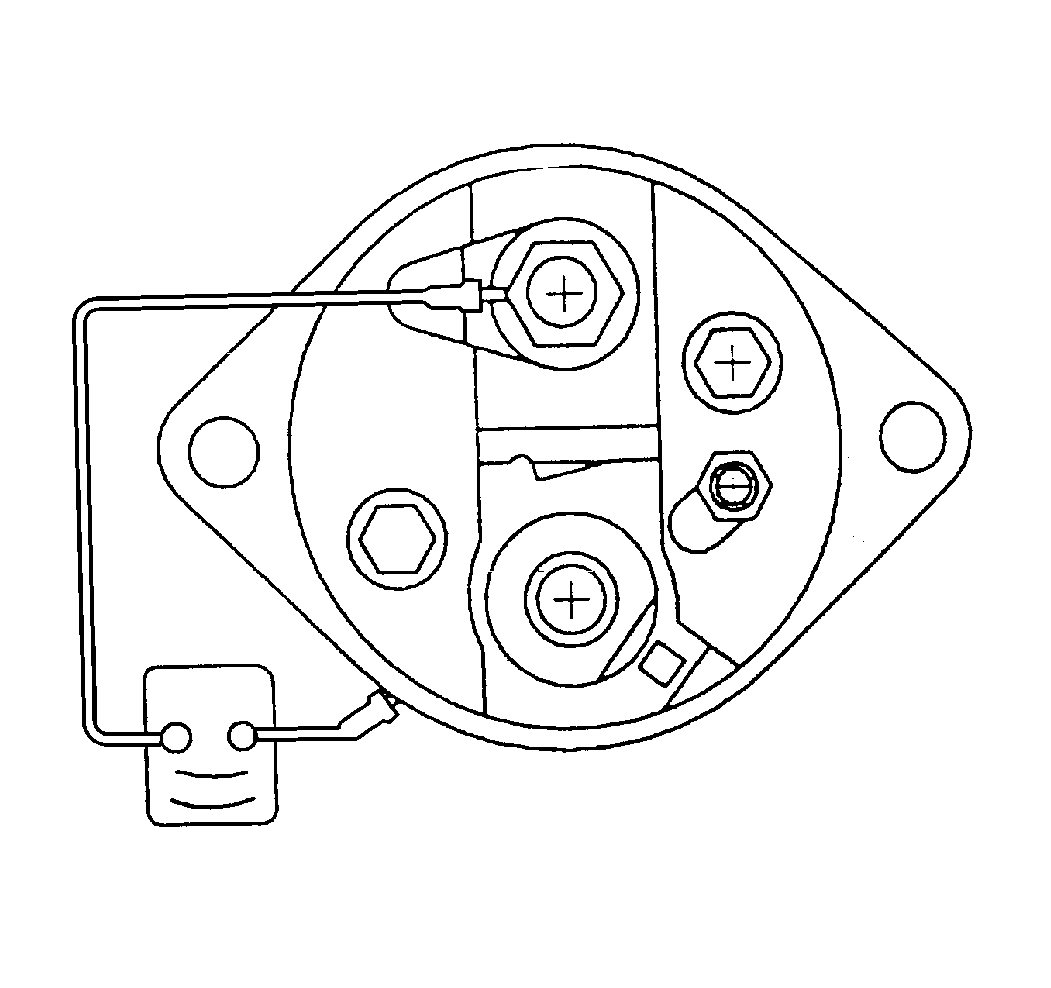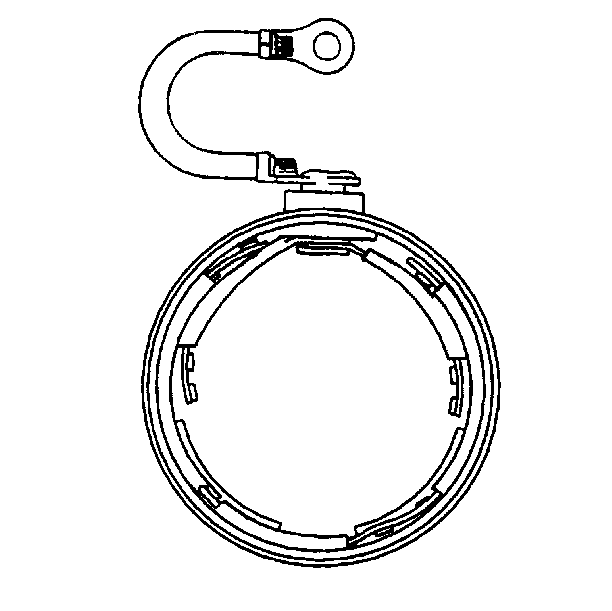Starter Inspection 28-MT
Cleaning and Inspection Procedure
Notice: Do not clean or immerse the starter motor parts in grease
dissolving solvents. The solvents will dissolve the grease packed in the drive
or the bearings, and may damage the armature or the field coil insulation.
Perform the following cleaning and inspection procedure
in order to determine the serviceability of the starter motor components and
assemblies.
- Clean all starter motor components with a clean soft cloth prior
to testing.
- Inspect all of the components for the following conditions:
| • | Replace any components or assemblies that exhibit any of the above conditions. |
- Inspect the threaded components for the following conditions:
| • | Otherwise damaged threads |
| • | Replace the components exhibiting the above conditions if the above
condition cannot be cleaned up using a suitable tap or die. |
- Inspect the solenoid assembly for a cut or a torn boot. If the
boot is damaged, replace the solenoid assembly.
- Inspect the clutch drive assembly. Replace the assembly if the
following conditions exist:
| • | The pinion gear turns roughly or turns in both directions |
| • | The pinion gear has teeth that are broken or show evidence of
step wear |
| • | The shift lever collar shows deep scoring or other damage |
- Inspect the brush holder assembly for loose riveted joints and
cracked or broken insulation. Replace the bush holder assembly if damaged.
- Inspect the brushes for excessive wear. The minimum allowable
brush length is 12 mm (0.472 in). Replace excessively worn
brushes in sets.
- Inspect the drive end housing bushing for scoring or other damage.
Replace the damaged bushing.
- Perform the following ball bearing inspection procedure:
| 9.1. | Hold the armature or driveshaft. Slowly rotate the outer bearing
race by hand. |
| 9.2. | Verify that the bearing turns freely without binding or the feel
of flat spots. |
| 9.3. | Replace any damaged bearings. |
- Inspect the armature assembly for the following conditions:
| • | Gear teeth that are broken, or that show evidence of step wear
or root interference. |
| • | A rough commutator surface. Polish the surface with 400 grit polishing
cloth if necessary. Thoroughly clean metal dusts from between the commutator
bars. If the commutator surface cannot be repaired in this manner,
replace the armature assembly. Do not turn the commutator in
a lathe. |
| • | A worn commutator. Replace the armature assembly if the commutator
outer diameter is less than 36 mm (1.378 in) or if the undercut
depth at any point is less than 0.2 mm (0.008 in).
Do not undercut the insulation. |
- Inspect the driveshaft for the following conditions. Replace the
driveshaft if necessary.
| • | Scored or damaged shaft where the driveshaft turns inside the
bushing |
| • | Internal gear with teeth broken or showing evidence of step wear |
| • | A damaged spline. The clutch drive assembly must slide smoothly
and easily over the full length the spline. |
Component Electrical Testing Procedure
Perform the following electrical tests in order to determine the serviceability
of the starter assemblies:

- Use an ohmmeter in order
to test the windings of the solenoid assembly for continuity:
| • | Test the resistance of the solenoid pull-in and hold-in windings
in a series by measuring the resistance between the motor terminal and the
solenoid case. |
| • | A resistance reading well above 1.3 ohms indicates a break
or fault in the winding continuity. |
| • | A resistance reading well below .8 ohms indicates
a short or ground in the winding circuit. |
| • | Replace the solenoid assembly if the resistance reading is extremely
high or very low. |
- Use the following procedure in order to test the armature assembly.
Replace a shorted or grounded armature, or an armature that shows evidence
of opens.
| 2.1. | Perform the following procedure in order to test the armature
for short circuits. |
| 2.1.1. | Rotate the armature in a growler. |
| 2.1.2. | Hold a steel strip such as a hacksaw against the armature. |
| 2.1.3. | If the steel strip vibrates in an area, a short is present. |
| 2.2. | Use a ohmmeter in order to test for continuity between the armature
shaft and any point on the commutator. Continuity indicates a ground. |
| 2.3. | Inspect the points where the armature conductors join the commutator
and or individual commutator segments for signs of arcing or burning. These
signs indicate opens. |

- Perform the following
procedure in order to inspect the frame and field assembly for grounds or
opens:
| 3.1. | Inspect the field coil connections for opens between the field
terminal and the connection points for insulated brushes on the filed coil
straps. |
| 3.2. | Use a self-powered test lamp or ohmmeter in order to test for
continuity or grounds between the frame and the field terminal. |
| 3.3. | Replace the frame and field assembly that has grounds or opens. |


